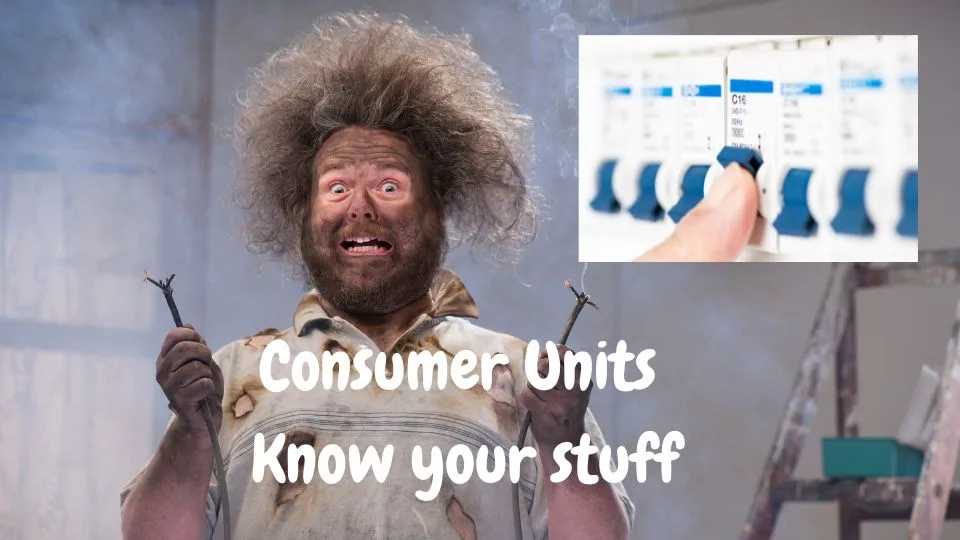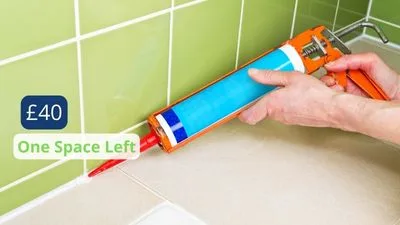Consumer Units. What you need to know.

What is a Consumer Unit?
You might hear a Consumer Unit called different things: a Distribution Board, a Fuse Box—whatever. In the trade, it’s mostly called a Consumer Unit, or just CU for short, so let’s stick with that to keep it simple.
I’ll try not to bore you to sleep here, because this stuff matters, but I get it—electrics aren’t exactly thrilling.
No matter what you call it, a CU is what distributes electricity around your home. At its core, a CU should have a Main Switch, which lets you shut everything off if needed. You’ll also find various fuses or MCBs (Miniature Circuit Breakers) that control each circuit in your home.
If you’re lucky (and lots of people are these days), you might also have an RCD. If you’ve got two, great. If each circuit has its own, you’ve hit the jackpot.
Consumer Units come in all sorts of shapes, sizes, and safety levels. We’ll run through some of them below.
Keep reading…
1. Consumer Unit with Ceramic Rewireable Fuses

These are old-school and, honestly, look pretty cool (if you’re into that sort of thing). But they belong in a museum, not in your home. If you have one, it’s a good sign that you haven’t had certified electrical work done in ages, so call an electrician.
What it does:
This CU protects against circuit overloads—the fuse wire inside will break if there’s too much demand.
What it doesn’t do:
It won’t protect you from getting shocked or seriously hurt if there’s an earth fault.
What’s an Earth Fault?
It’s when an electrical current tries to escape to the ground (Earth). It is often caused by cutting a cable (e.g. by drilling into it) or a sudden appliance fault.
2. Consumer Unit with Rewireable Fuses

These are still fairly common and do the basics.
What it does:
It stops you from overloading circuits by tripping a fuse. You can reset it by pressing a button or flipping a switch—way easier than the older CUs.
What it doesn’t do:
Like the older ones, it won’t protect against electrocution from an earth fault. If you’ve got one, you might need an upgrade if you’re getting electrical work done, since newer regulations prioritise safety and require RCDs.
What is an RCD?
An RCD (Residual Current Device) is a nifty safety gadget that trips when it detects an earth fault. Potentially it will save your life.
At its most basic level, it constantly monitors the current in your house. If it detects an imbalance, it assumes that the current has gone into something it shouldn’t have – you. It should trip within milliseconds. This will save your life.
3. Consumer Unit with an RCD as Main Switch

This setup has an RCD that acts as the main switch. It’s better than nothing, but if there’s a fault on any circuit, the whole thing shuts down. Not ideal if you’re halfway through cooking dinner.
What it does:
It gives you some protection against earth faults, which is a step up from the older units.
4. Consumer Unit with Two/Dual RCDs

For a while, this was the go-to upgrade. These CUs usually have a plastic casing (newer ones are metal for better fire protection) and split your circuits into two groups, each with its own RCD.
What it does:
If one circuit trips an RCD, only half your house goes down. The other RCD keeps things running, which is more convenient but still a bit of a hassle.
You can find these CUs sold cheap in DIY stores because they don’t meet current regulations any more. Don’t be tempted—it’s not a bargain.
And you shouldn’t even be thinking abut carrying out that kind of electrical work anyway.
5. Consumer Unit with Individual RCBOs

This is what electricians install nowadays to meet the latest safety standards.
What it does:
This setup has a metal casing and a Main Switch, with each circuit controlled by its own RCBO (a combined fuse and RCD). If a fault occurs, only the affected circuit is shut down, so the rest of your home stays powered. It also likely includes a Surge Protection Device (SPD) to shield sensitive electronics like TVs and computers.
It’s more expensive but offers way better protection and convenience, especially in older homes where wiring can be dodgy.
Labelling
You’ll notice that labelling on CUs can be hit or miss. It’s really handy to know which fuse or RCBO controls which circuit, especially in an emergency.
If your CU isn’t well labelled, you can fix that yourself in about an hour. Grab some clean labels and a fine-tip pen. Go through each MCB one by one—switch it off and see what stops working. Jot down what each circuit controls and label accordingly.
Keep a record of this info near the CU; it could save you a lot of hassle (or even your life) later.
Plus, it’ll make things easier for any electrician working in your home.
If you have issues with your RCD not resetting after it has tripped, check out our handy post: Help, I have no Power








